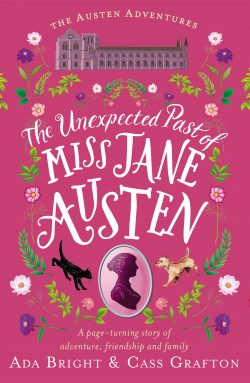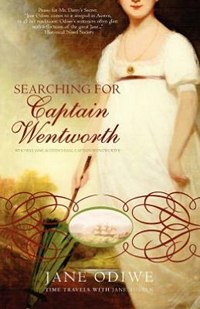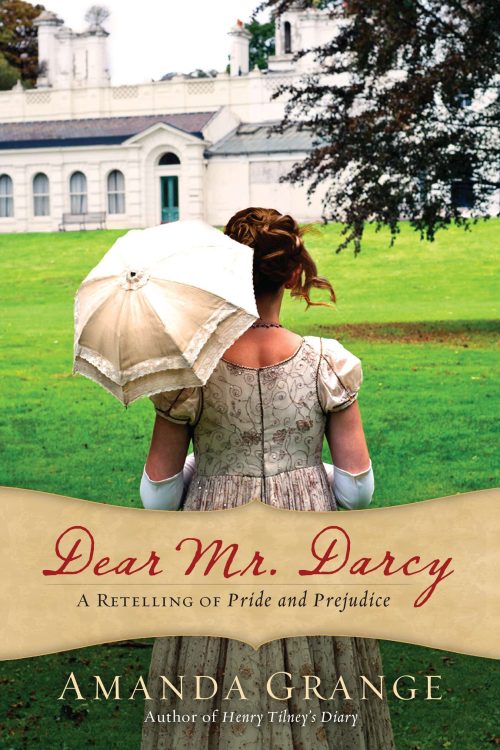Hey-ho Janeites! May I introduce you to a newly released Regency romance fantasy novel today? By Time Divided, by Elaine Jeremiah is a time-travel story that takes us back into Jane Austen’s England. Time-travel in fiction is a creative literary technique. It allows characters and readers to be transported to a different era. The Time... Continue Reading →
A Preview of The Unexpected Past of Miss Jane Austen, by Ada Bright and Cass Grafton
Today is the official launch day for the second fantasy novel in the Austen Adventures series, The Unexpected Past of Miss Jane Austen, by Ada Bright and Cass Grafton. Congratulations to the authors. This novel includes heroine Rose Wallace and her beau Aiden Trevellyan who we were introduced to in book one, The Particular Charm... Continue Reading →
Jane Austen at Home: A Biography, by Lucy Worsley — A Review
From the desk of Tracy Hickman: What can the places that Jane Austen called home tell us about the author’s life and work? In Jane Austen at Home, historian, author, and BBC presenter Lucy Worsley looks at the author’s life through the lens of Austen’s homes. As Worsley notes in the book’s introduction, “For Jane,... Continue Reading →
Preview of Gentlemen of Uncertain Fortune: How Younger Sons Made Their Way in Jane Austen’s England, by Rory Muir
In Jane Austen’s novels, we discover the plight of younger sons who because of the English primogeniture laws, could not inherit their father’s estate and must find their own way in the world. Colonel Fitzwilliam in Pride and Prejudice and Henry Tilney in Northanger Abbey come immediately to mind. This father to first son inheritance... Continue Reading →
The Regency Years: During Which Jane Austen Writes, Napoleon Fights, Byron Makes Love, and Britain Becomes Modern, by Robert Morrison — A Review
From the desk of Tracy Hickman: The subtitle for Robert Morrison’s history of Regency Great Britain, “during which Jane Austen writes, Napoleon fights, Byron makes love, and Britain becomes modern,” hints at the variety and diversity within its pages. In contrast to Jane Austen’s tightly focused fiction, famously self-described as “three or four families in... Continue Reading →
The Passions of Dr. Darcy, by Sharon Lathan – A Review
From the desk of Kimberly Denny-Ryder: Some series are just too good to let go, whether they be movies, TV, or books. Sharon Lathan’s Darcy Saga, inspired by Jane Austen’s Pride and Prejudice, is one such series. I’ve had the pleasure of reading all six of the previous novels, and I was sure that book... Continue Reading →
Return to Longbourn: The Next Chapter in the Continuing Story of Jane Austen’s Pride and Prejudice, by Shannon Winslow – A Review
From the desk of Kimberly Denny-Ryder: Ever since Shannon Winslow debuted with The Darcys of Pemberley (DoP) in 2011, she’s been an Austen fan-fiction author that I’ve kept on my radar. In the two years since she published DoP I’ve not only read everything else she’s written, For Myself Alone (2012) and Mr. Collins’s Last... Continue Reading →
Georgiana and the Wolf: Pride and Prejudice Continues Volume 6, by Marsha Altman – A Review
From the desk of Veronica Ibarra As if reading about the continued lives of our favorite characters from Pride and Prejudice and that of their children is not fascinating enough, send one Georgiana Bingley to seminary in France, throw in a murder with the rumor of a werewolf, and you potentially have something quite interesting.... Continue Reading →
A Proper Companion: A Regency Romance, by Candice Hern – A Review
Today marks the official opening of the Regency Romance Reading Challenge 2013, our celebration of Regency romance author Candice Hern. We will be reading all of her traditional Regencies over the next nine months, discussing her characters, plots and Regency history. You can still join the reading challenge until July 1, 2013. Participants, please leave... Continue Reading →
Searching For Captain Wentworth Blog Tour with Author Jane Odiwe
Huzzah! We have a treat for you today. Jane Odiwe, author of Willoughby’s Return and Mr. Darcy’s Secret has just released her new novel, Searching For Captain Wentworth and is sharing an audio extract and insights into its creation. We have had the pleasure of reading this new Regency-era time-travel novel and are so pumped... Continue Reading →
Mr. Darcy’s Refuge Blog Tour with Author Abigail Reynolds & Giveaway
Please help us welcome Austenesque author Abigail Reynolds today during her blog tour in celebration of the release of Mr. Darcy’s Refuge, the ninth novel in her popular Pemberley Variations series. Whenever I read one of her creative and romantic takes on roads not taken in Jane Austen’s Pride and Prejudice, I feel a bit... Continue Reading →
A Preview of Dear Mr. Darcy: A Retelling of Pride and Prejudice, by Amanda Grange
From the desk of Laurel Ann Nattress: Please join us today in welcoming author Amanda Grange on the launch of her blog tour of Dear Mr. Darcy, a new retelling of Pride and Prejudice from Mr. Darcy’s perspective. Wait! Didn’t Amanda already write Mr. Darcy’s Diary? Yep, she did, but this novel has a new... Continue Reading →











